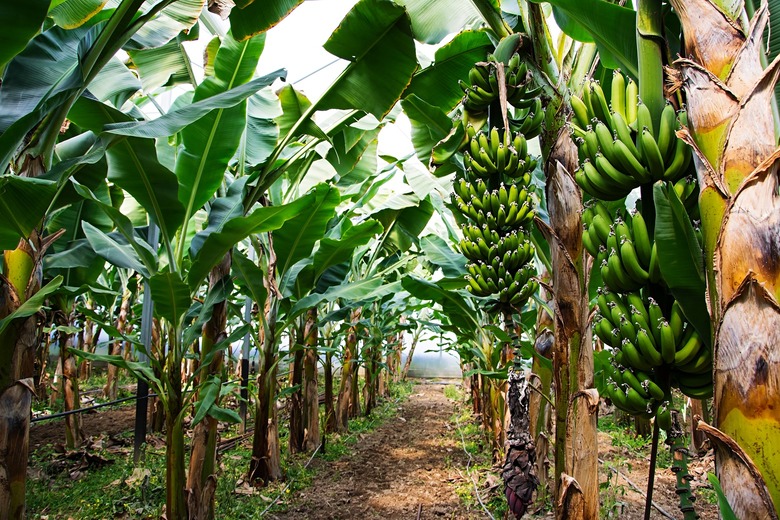Banana Trees Are Actually Giant Herbs
There are a number of foods in the world that aren't what one might think they are — from tomatoes being fruits (but also, legally, vegetables) to German chocolate cake not being German at all.
When you think of herbs, the first things that come to mind are probably things like parsley, basil, cilantro, or oregano. One generally thinks of herbs as small, leafy plants that impart lovely flavor to the food we cook and that tend to be rather fragile (with some exceptions, like rosemary, but that's a different story). While this is one correct definition of an herb, according to Wikipedia, in general, herbs "are any plants used for food, flavoring, medicine, or fragrances for their savory or aromatic properties."
Banana plants do not have a typical, solid, wooden trunk supporting the plant that would classify them, botanically, as a tree. Instead, layers and layers of leaves furled around one another form a stem that can be as much as 12 inches thick and 40 feet tall, making it one of the largest "herbs" grown on the planet. Once the fruit has been harvested, the entire banana plant dies down, and grows again the following season.
According to Stanford University it's not just that the banana plant is technically an herb — the banana fruit is also technically a berry. "True berries are simple fruits stemming from one flower with one ovary and typically have several seeds." A banana fits this definition from a botanical standpoint.
The food world is full of bizarre facts, so don't let this information rattle you too much. If anything, let it spur you on to discover more wonderful, wacky facts about food — from weird food side effects to things you never knew about cheese! Be the investigative gastronome you are yearning to be!
